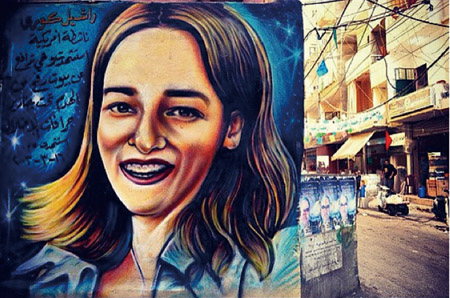
Researcher: Nahla Al Tabbaa Region: Southern Asia and Central-Western Asia
The year 1982 saw the heinous massacre of 3500 Palestinian refugees in the Sabra and Shatila camps in the outskirts of Beirut, Lebanon. Unan- nounced, Faluga soldiers with the allowance of Israeli soldiers wiped out a population, leaving the survivors permanently traumatized. 30 years on, the camp suffers from poor sanitation, hardly any electricity and water, and the heavy hearts of its survivors. This project aimed to frame this memorial as a current form of documentation. Susan Greene had been working with the intersections of trauma, resilience, memory and creativity for two decades and founded Art Forces. Art Forces aims to inspire critical thinking and action through community art projects, social media, bring awareness of the Palestinian conflict, across the waters to the United States. Regional artists were invited to enter into Sabra and Shatila camps – a rare process which requires permits, limited visitations and heaps of paper- work, to meet its inhabitants who are confined to these camps. The artists learnt of a heavy sadness, poor living conditions, and a desire for these people to move, create, feel inspired, and to reinforce their collective memory, particularly as new generations are being born. Community participation during the mural painting set a platform to engage in a dialogue between the artists and the community. They were able to exchange stories, dreams, ambitions- personal or collective, and reflect on their daily conflict. Often, such projects tend to exceed expecta- tions, echoing past the mural making, particularly as relationships are built organically, and unexpected collaborations occur. The main emotional theme that emerges from the Sabra and Shatila discourse is one of silence, and a sense of loss. The witnesses and survivors of the massacre feel, as time passes, that the gravity of the manner in which they lost a community would in itself be lost without documentation that wouldn’t erode. The manner in which Art Forces not only manifested that documentation in a timeless, and traditional, manner, not only brought a sense of tangibility to the saga, but also affected the worldview that the camp had of its own buildings. The term ‘camp’ is only used to describe the concrete buildings that would otherwise be validly termed as towns, because the residents are refugees. The idea of these settlements being camps evokes the constant dream that the residents may one day be able to ‘decamp’ and return to their homelands. This train of thought was effectively addressed by Art Forces in the manner in which the murals were collectively created, and provided a public ownership of art that was publicly relevant to that particular community. |